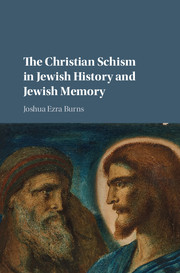Book contents
- The Christian Schism in Jewish History and Jewish Memory
- The Christian Schism in Jewish History and Jewish Memory
- Copyright page
- Contents
- Acknowledgments
- Abbreviations
- Introduction
- 1 The Parting of the Ways in Contemporary Perspective
- 2 Jewish Identity in Classical Antiquity: Critical Issues and Approaches to Definition
- 3 Early Christian Negotiations with Jewish Identity
- 4 Reading Christianity as a Jewish Heresy in Early Rabbinic Texts
- 5 Shifting Demographics and the Making of a Schism
- Epilogue
- References
- Index
- References
References
Published online by Cambridge University Press: 05 March 2016
- The Christian Schism in Jewish History and Jewish Memory
- The Christian Schism in Jewish History and Jewish Memory
- Copyright page
- Contents
- Acknowledgments
- Abbreviations
- Introduction
- 1 The Parting of the Ways in Contemporary Perspective
- 2 Jewish Identity in Classical Antiquity: Critical Issues and Approaches to Definition
- 3 Early Christian Negotiations with Jewish Identity
- 4 Reading Christianity as a Jewish Heresy in Early Rabbinic Texts
- 5 Shifting Demographics and the Making of a Schism
- Epilogue
- References
- Index
- References
- Type
- Chapter
- Information
- The Christian Schism in Jewish History and Jewish Memory , pp. 255 - 288Publisher: Cambridge University PressPrint publication year: 2016

